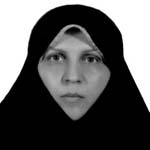Relationship between gestational as well as neonatal disorders and baby bottle syndrome
Author(s):
Abstract:
Background And Aim
Dental caries is a fundamental problem affecting children’s health. In spite of extensive preventive programs from dental disorders, baby bottle syndrome is still one of the most common chronic childhood diseases. Since this syndrome is caused by many factors, no consensus exists regarding its etiology. The aim of this analytical retrospective study was to determine the relationship between gestational as well as neonatal disorders and baby bottle syndrome in children referring to health centers affiliated to Shahid Beheshti University of Medical Sciences in 2008.Materials And Methods
101 children in two case and control groups were selected by purposive sampling method. Researchers described the purpose of the study for mothers of children of age 3 to 4 at the settings. In case of having their agreement and required qualifications to take part in the study, children were examined by a dentist for the diagnosis of baby bottle syndrome. A perinatal questionnaire was completed by mothers. Content and test-retest methods were used for validity and reliabilityof the questionnaire respectively. Data analysis was performed by SPSS package (ver 16).Findings
Mean ages of healthy-teeth and baby-bottle-syndrome children were 3.67± 046 and 3.75±0.35 respectively. No significant difference was found between the groups in terms of relative factors. 12% and 5.9% of mothers had gestational bleeding in the case and control groups respectively. In addition, during their pregnancy, 14% and 5.9% of mothers were hospitalized due to medical conditions, 4% and 2% had gestational diabetes, and 58% as well as 41.2% had caesarian delivery in the case and control groups respectively with no statistical difference. No significant difference was also found between gestational disorders, e.g. chronic hypertension, preeclampsia as well as multiple pregnancy and neonatal disorders, e.g. preterm delivery and low birth weight in the groups.Conclusion
Some of the disorders such as gestational bleeding in the first and second trimester, hospital stay due to medical conditions, gestational diabetes and delivery type were more frequent in the case.Keywords:
Language:
Persian
Published:
Advances in Nursing & Midwifery, Volume:19 Issue: 66, 2010
Page:
22
https://www.magiran.com/p699112
سامانه نویسندگان
مقالات دیگری از این نویسنده (گان)
-
The effectiveness of group training based on transactional analysis on creating a difference between self and fetus and presenting maternal feelings in pregnant women
Sara Langroudian, Mehran Azadi*, , Zohre Mousazadeh
Rooyesh-e-Ravanshenasi, -
Anemia in pregnant mothers and the risk of low birth weight: a systematic review and meta-analysis
Atena Hakimzadeh, *, Marzieh Bagherinia, Kimia Hosseinpour
Iranina Journal of Obstetrics Gynecology and Infertility, -
Using Longitudinal Variance Components Models to Assess Hyper-connectivity in Severe Traumatic Brain Injury Patients
Keyvan Olazadeh, Nasrin Borumandnia, Mahin Habibi, *
Basic and Clinical Neuroscience, Jul-Aug 2024 -
Childbearing challenges in breast cancer survivors: a systematic review
Behjat Khorsandi, *, Zoherh Mahmoodi, Mohammadali Broomand,
Iranina Journal of Obstetrics Gynecology and Infertility,



